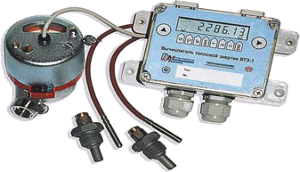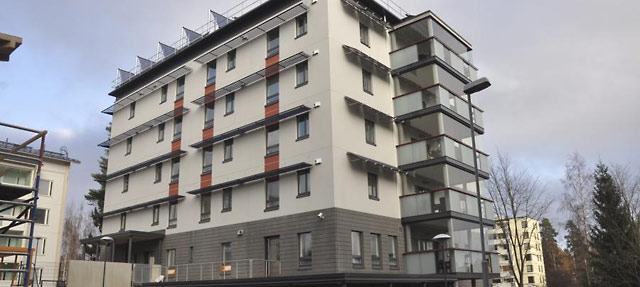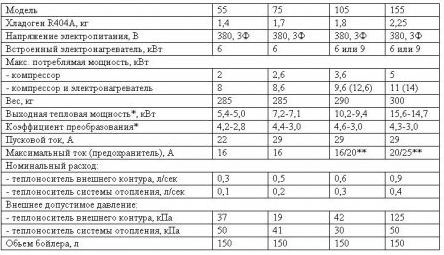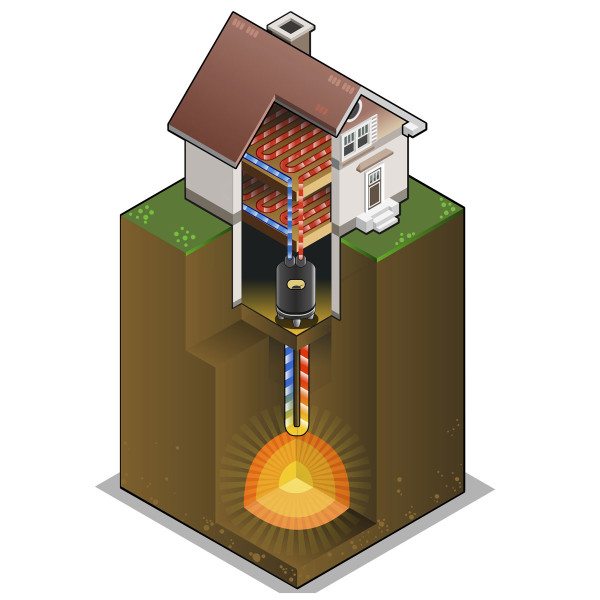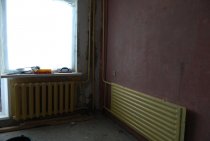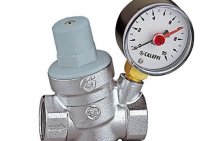A single payment document for payment of housing and communal services from the management company
From 09/01/2012, the "Rules for the provision of utility services to owners and users of premises in apartment buildings and residential buildings" come into force, approved by Decree of the Government of the Russian Federation No. 354 of 06/05/2011. Paragraphs 10, 13 and 71 read:
These points, as it were, give the management company (for example, ZhREP), as a "utility services contractor", the right to try collect all supplies of utility services under you and collect fees for them within a single payment document. The form of this single "payment" was approved by order of the Ministry of Regional Development of the Russian Federation No. 454 dated 19.09.2011.
but implementation of this point in practice is still far away. For example, "gas workers" do not want to enter into anyone's "payment", preferring to expose themselves. The same situation is with Vodokanal. Presumably, more active movement in this direction will begin after 2013, when the Unified Settlement and Cash Center (ERCC) of VKS OJSC will undergo some changes. Now the ERCC is wholly owned by VKS OJSC, but soon half of the division will come under the control of the administration of the city of Vladimir, so that the center's activities are as transparent as possible and controlled by the municipality. (For reference: the ERCC itself was once created precisely as a single center, which was supposed to issue a single "payment", but this did not work out, including "thanks" to the same "gas workers" and "water utilities".)
However, specifically my management company (one of the former ZHREP) claims that “to date, an agreement has been reached with MUE “Vladimirvodokanal” on the conclusion from 01.09. companies and equipped with commercially registered ODPU (general house metering devices). It is also promised that "the issue of including payments for gas supply in a single payment receipt will be considered after the equipping of apartment buildings with ODPU."
And here is what my management company says about the inclusion of the services of VKS OJSC in its single "payment": "VKS OJSC" failed in concluding a contract for the supply of electricity and heat ... Accordingly, the issue of including payments for electricity, heating and hot water in a single payment receipt ... will be considered after resolving the dispute with VKS OJSC ... in the Arbitration Court of the Vladimir Region. And here is the official comment of the press service of VKS OJSC ...
So "not everything is a single" payment "that glitters." 🙂 Most likely, the maximum that my management company will be able to do in the near future is to reduce the number of receipts for housing and communal services for me by only one piece: previously, a separate receipt of the Vladimirvodokanal Municipal Unitary Enterprise has already practically entered the “single” receipt of the ZhREP for September 2012. But it’s not a fact that this will be good and convenient for me, since I used to pay for the services of Vodokanal through the Internet bank MinBa, between which excellent communication and a special payment form were established, while ZhREP always paid in the full form of a payment order where there are no special fields, for example, for reading water meters ...
Archive number 43 837 dated October 26, 2010 Consumer
ACUTE TOPIC
Again about accruals under the OPU: in order not to pay for a neighbor
Residents of the regional center, outraged by the huge amounts of accruals for common house meters (OPU), do not stop contacting the editorial office of DDD. Alexander Polyakov, director of the department for reforming the municipal economy, gave comments on additional charges in excess of the readings of individual meters for water and electricity consumption.
| Owners are advised to take readings on the same day |
According to him, the current high coefficient of additional charges for consumed utilities may be due to a number of reasons:
• different time of taking readings of apartment metering devices;
• the presence of non-payers in a particular apartment building;
• the presence of unregistered, but actually living citizens in a particular apartment building;
• in some cases - connection to the general house metering device for tenants of non-residential premises.
So what needs to be done in order not to pay for a neighbor? “Residents of apartment buildings (heads of the house), together with representatives of management companies and resource-supplying organizations, are recommended to hold a meeting in order to take into account the actually living citizens, identify non-payers and determine the date for taking readings from individual metering devices,” says Alexander Nikolayevich. - In addition, it is necessary to carry out a quarterly commission check of the reliability of the readings of common house metering devices for utilities.
If errors or failures are found when taking readings from common house metering devices, management companies are recommended to provide information to JSC ERCC of the city of Kursk for recalculation when calculating utility bills for residents of apartment buildings. Error means incorrect information of the management company about the readings of the OPU.
To obtain more accurate information about the readings of the GTC, the Kursk people are recommended to take commission readings of the GTC with an analysis of the growth of readings for the previous period and the readings in the invoices.
In accordance with the current rules, in order to determine the additional charge coefficient, it is necessary to divide the volume of the communal resource according to the operating income for a particular house by the total volume of the communal resource according to the IPU and according to consumption standards. Example: 32000 kWh - volume according to the OPU; 27,000 kWh - the total volume according to the indications for IPU and consumption standards. Coefficient to additional charge 32000/27000=1.18518.
How a heat pump works
Heat pump design
The "heart" of geothermal heating is the heat pump. It consists of several components, the operation of which directly affects the efficiency of the entire system. Therefore, before planning the heating of a private house from the ground, you need to find out the main characteristics of this node.
Since this device belongs to the category of complex equipment, it is recommended to purchase only factory models. The design of the heat pump includes the following components:
- Evaporator. In this block, energy is transferred from the external circuit;
- Compressor. Necessary to create high pressure in the refrigerant environment;
- Capillary. It serves to reduce the internal pressure in the refrigerant circuit;
- Control system. With its help, the heating of a private house from the ground is regulated - the temperature regime of operation, the speed of passage of heat carriers, etc.
The main problem in the self-manufacturing of a heat pump is to reduce heat losses and normalize the operation of the internal refrigerant circuit. Factory models are set up at the manufacturing stage, and the design provides for the possibility of adjusting its parameters.
How to correctly calculate the parameters of the pump so that the heat of the earth for heating the house provides a normal temperature? To do this, you need to know the heat output of the pump. For an approximate calculation, you can use the following formula:
Where t1-t2 is the temperature difference between the inlet and return pipes, °С, V is the calculated volume of heat carrier flow, m³/h, Q is the rated power of the heat pump, W.
This technique is inapplicable for complex systems, since they contain many additional factors. In particular, heat losses on the highway. This is especially true for those areas where it goes as close as possible to the surface of the soil.To minimize heat losses, the heating pipes should be insulated in the ground.
Since the operation of the heat pump depends on electricity, it is recommended to install an emergency power supply unit.
In Finland, apartment buildings are fully self-sufficient in energy. Electricity bill 0
30.07.2019
In Finland, they have learned to build houses that are fully self-sufficient in energy. One of Finland's so-called active houses is located in Järvenpää, not far from Helsinki.
Imagine a future without electricity bills. The house fully provides itself with energy using the sun, wind and heat from the bowels of the earth. And this is possible even in northern Finland.
The northern climate creates its own difficulties for the construction of active houses. Long, dark and cold winters require a well-planned energy recovery system, thermal insulation equipment and quality waterproofing materials.
Despite everything, the construction of active houses is possible thanks to new building materials, modern technologies and active research work. This issue is dealt with by dozens of universities from around the world, including the Finnish Aalto University.
The effectiveness of the proposed solutions is first tested on experimental houses. The first Finnish experimental house called "Luukku" (hatch) was designed by students of the architecture department of Aalto University.
Home is a power plant
An active home produces the energy it needs using geothermal heat, as well as solar and wind energy. An active house does not have to stand out from other street buildings, because all the necessary equipment can be discreetly integrated into the structures.
Designing begins with the selection of a suitable place where the house will be built. For example, in order to recuperate solar energy, there should not be a lot of trees nearby that cast a shadow, and it is best to turn windows to the south.
Energy consumption reduced to a minimum
From the point of view of efficiency, it is important to take care of minimizing the amount of energy consumption. This does not mean that the tenant will have to give up amenities - you can live in an active house, like in any other house.
Consumption is reduced due to technical solutions. The house is built dense with high thermal insulation. A powerful ventilation system is installed in it, to which a waste heat recovery system is connected. Fresh indoor air also improves comfort.
A house with an extremely simple architectural form is easy to make energy efficient, for the reason that the absence of unnecessary ledges minimizes heat loss. The construction of active houses thus fits well with Finnish functional architectural traditions.
The house in Kuopio is a student residence with 47 apartments. Residents have access to a gym, as well as a steam and infrared sauna. The house itself produces the consumed energy with the help of solar panels and a geothermal heating system.
An active high-rise building in Järvenpää was built in the summer of 2011. It has 44 apartments for the elderly. The house has a geothermal heating system. Solar panels, in turn, heat the water and supply the house with electricity. Even the braking energy of elevators is used to generate electricity.
The ventilation system collects almost 80% of the heat energy for secondary heating. According to the calculations, the house in Järvenpää produces even more energy than it consumes. Thus, it seems to be the first active house with positive energy in Finland.
Today, the company that built the house in Järvenpää is proud of the results of its work: years of operation have proven that the technology is effective.
Heat pump calculation example
I will give an approximate calculation of a heat pump for our eco-house, described in the Eco-house article.Heat supply of the eco-house.
It is believed that to heat a house with a ceiling height of 3 m, it is necessary to spend 1 kW. Thermal energy per 10 m2 area. With a house area of 10x10m \u003d 100 m2, 10 kW of thermal energy is needed.
When using a warm floor, the temperature of the heat carrier in the system must be 35°C, and the minimum temperature of the heat carrier is 0°C.
Table 1. Thermia Villa heat pump data.
To heat a building, choose a heat pump with a capacity of 15.6 kW (nearest larger size), which consumes 5 kW for the operation of the compressor. We select heat removal from the surface layer of soil according to the type of soil. For (wet clay) q is 25 W/m.
Calculate the power of the heat collector:
Qo=Qwp-P, where
Qo – heat collector power, kW;
Qwp – heat pump power, kW;
P is the electrical power of the compressor, kW.
The required heat output of the collector will be:
Qo=15.6–5=10.6 kW;
Now let's determine the total length of the pipes:
L=Qo/q, where q is the specific heat removal (from 1 m. pipe), kW/m.
L \u003d 10.6 / 0.025 \u003d 424 m.
To organize such a collector, 5 contours with a length of 100 m each will be required. Based on this, we will determine the required area of \u200b\u200bthe site for laying the contour.
A=Lxda, where da is the distance between the pipes (laying step), m.
With a laying step of 0.75 m, the required area of \u200b\u200bthe site will be:
A \u003d 500x0.75 \u003d 375 m2.
Heat pump. home heating design
To understand its principle of operation, you can look at an ordinary household refrigerator or air conditioner.
Modern heat pumps use for their work low-grade heat sources - the earth, groundwater, air. Both in the refrigerator and in the heat pump, the same physical principle operates (physicists call this process the Carnot cycle). A heat pump is a device that "pumps out" the heat from the refrigerator compartment and throws it onto the radiator. The air conditioner "pumps out" heat from the air of the room and throws it on the radiator, but located on the street. At the same time, to the heat "sucked" from the room, more heat is added, into which the electrical energy consumed by the air conditioner's electric motor has turned.
The number that expresses the ratio of the thermal energy produced by the heat pump (air conditioner or refrigerator) to the electrical energy consumed by it is called the “heating coefficient” by heat pump specialists. In the best heat pumps, the heating coefficient reaches 3-4. That is, for every kilowatt-hour of electricity consumed by the electric motor, 3-4 kilowatt-hours of thermal energy are generated. (One kilowatt-hour corresponds to 860 kilocalories.) This conversion factor (heating factor) directly depends on the temperature of the heat source, the higher the source temperature, the greater the conversion factor.
The air conditioner takes this heat energy from the outdoor air, and large heat pumps "pump out" this additional heat, usually from a reservoir/groundwater or the ground.
Although the temperature of these sources is much lower than the air temperature in a heated house, the heat pump also converts this low-temperature heat of the ground or water into the high-temperature heat needed to heat the house. Therefore, heat pumps are also called "heat transformers". (see transformation process below)
Note: Heat pumps not only warm houses, but also cool the water in the river, from which heat is pumped out. And in our time, when the rivers are too overheated by industrial and domestic wastewater, cooling the river is very useful for living organisms and fish to live in it. The lower the water temperature, the more oxygen can be dissolved in it, which is necessary for fish. In warm water, the fish suffocates, and in cold water it blisses. Therefore, heat pumps are very promising in saving the environment from “thermal pollution”.
But installing a heating system using heat pumps is still too expensive, because a lot of earthworks are required plus consumables, such as pipes to create a collector / heat exchanger.
It is also worth remembering that in heat pumps, as in conventional refrigerators, a compressor is used that compresses the working fluid - ammonia or freon.Heat pumps work better on freon, but freon has already been banned for use due to the fact that when it enters the atmosphere, it burns out ozone in its upper layers, which protects the Earth from the ultraviolet rays of the sun.
And yet, it seems to me that the future belongs to heat pumps. But they, no one yet mass-produces. Why? Not hard to guess.
If an alternative source of cheap energy appears, then where to put the produced gas, oil and coal, to whom to sell it. And what to write off the multibillion-dollar losses from explosions in mines and mines.
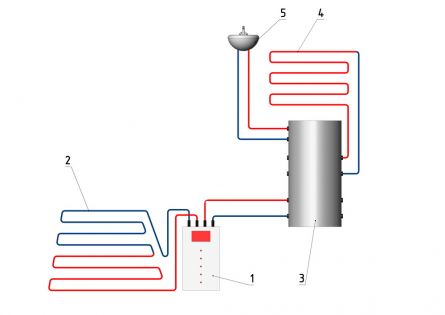
1 - heat pump; 2 - pipeline laid in the ground; 3 - indirect heating boiler; 4 - heating system "warm floor"; 5 - hot water supply circuit.
Accumulation of heat in tanks and caves in rocks
The steam accumulator consists of an insulated steel pressure vessel containing hot water and pressurized steam. As a method for heat storage, it is used to balance heat production from variable or stable sources with changing heat demand. Steam batteries may become really necessary for energy storage in solar thermal projects.
Large storage tanks are widely used in Scandinavia to store heat for several days, separate heat production and energy, and help meet peak demand. Interseasonal heat storage in caves has been investigated (and proved to be cost-effective).
How to make heating from the ground in a private house
Most of us understand that the use of coal, gas and wood as fuel does not do without a trace for the environment. However, the introduction of alternative energy sources is hampered by their high cost and efficiency, which are still inferior to traditional ones.
But lately, manufacturers have been paying more and more attention to such products, so we hope that soon they will be easier to install and not so expensive.
Today we will consider geothermal heating, which can be installed for a private house with your own hands. You will learn about the principle of its operation, types, features and self-assembly.
How is the heating of the country house with the heat of the earth
It is worth saying that in European countries and the USA, heating from the ground is gradually becoming the main source of heating at home, but so far such systems are only an alternative to more traditional ones.
Organization of geothermal heating
Installation of a horizontal geothermal heating circuit
Consumers still have the main question - is it possible to use the heating of a country house with the energy of the earth as the main one? This is possible, but only with a professional approach at all stages - from calculation to installation and testing of the system.
First of all, you need to choose the right heat pump. Given their high cost, you should first perform all preliminary calculations of its characteristics. Only in this case, heating due to the thermal energy of the earth will have the maximum efficiency. Among the reliable manufacturers are Buderus, Vaillant and Veissman. The average cost of a heat pump for heating from earth is about 360 thousand rubles with a rated power of 6 kW. More productive models can cost over 1 million rubles.
In addition to the cost, you need to pay attention to the material of manufacture of pipes. To minimize heat losses in heating from the thermal energy of the earth, it is recommended to use the following:
- Cross-linked polyethylene. Differs in low cost - it is optimal for horizontal circuits;
- Steel stainless pipe. It is used in heating with the help of thermal energy of the earth with a vertical arrangement of the external circuit.Favorably differs from cross-linked polyethylene by high thermal conductivity and mechanical strength. The disadvantage is the high cost.
For optimization, it is recommended to install external and internal temperature sensors, as well as a heat accumulator. This will minimize the cost of heating a private house with the energy of the earth.
Considering all these factors, in most cases, geothermal heating from the energy of the earth is installed as an additional one. Over time, the cost of components and the efficiency of heat pumps will increase - and only then can such systems be considered as the main ones.
An example of installing geothermal heating in a private house can be found by watching the video:
DHA has been introducing them since April 2014
From April 1, 2014, the Far Eastern Generating Company (OAO DGK, part of the RAO ES of the East) introduces new forms of receipts for payment for heat and hot water supply for residents of the Khabarovsk and Primorsky Territories.
The changes affected only the appearance of receipts. In the previous form, receipts for individual consumption and general house needs (ODN) were in the same table, and the penalty was located directly below it, now the columns of the table are separated. Innovations will not affect the amount of payments. All fees will remain the same.
The receipt of the new sample consists of two parts. The “upper” part of the receipt (with the letter “T”) contains data on individual consumption and information about the consumer’s debt for individual consumption, the line “penalty” is highlighted under it; in the "lower" part of the receipt (with the letters "Ta") information is indicated on the charges for ODN for the last month and the debt for ODN for hot water.
“In the “lower” part of the receipt, we indicate that the Far Eastern Generation Company makes charges for ODN on behalf of the contractor (managing organization), which has engaged us as an agent for the production of these calculations. Here are the details of the agency agreement under which the DGK operates. And the settlement account of DGK OJSC is indicated - this indicates that the client's money goes directly to the resource supply company. And in this case, the payer will not have unreasonable debt, as is sometimes the case with the settlements of unscrupulous management organizations with a service provider,” says Emma Ruban, head of the sales department of DGK OJSC.
Reference information, which was on the front side in the old form, has now been moved to the back of the receipt. Here, the consumer will still find the telephone number of the DGK hotline and its call center, the address of the Internet reception company, recalculation codes, in addition, information is posted here on how to transfer readings, information on metering devices and two-component tariffs.
Changes in the form of the receipt are dictated by the requirement of the legislation (Decree of the Government of the Russian Federation of February 14, 2012 No. 124 “On the rules mandatory when concluding contracts for the supply of communal resources for the provision of public services”), according to which payments for the heat supply service must be clearly separated in receipts: individual consumption, ODN and fine.
Plots:
DHA
